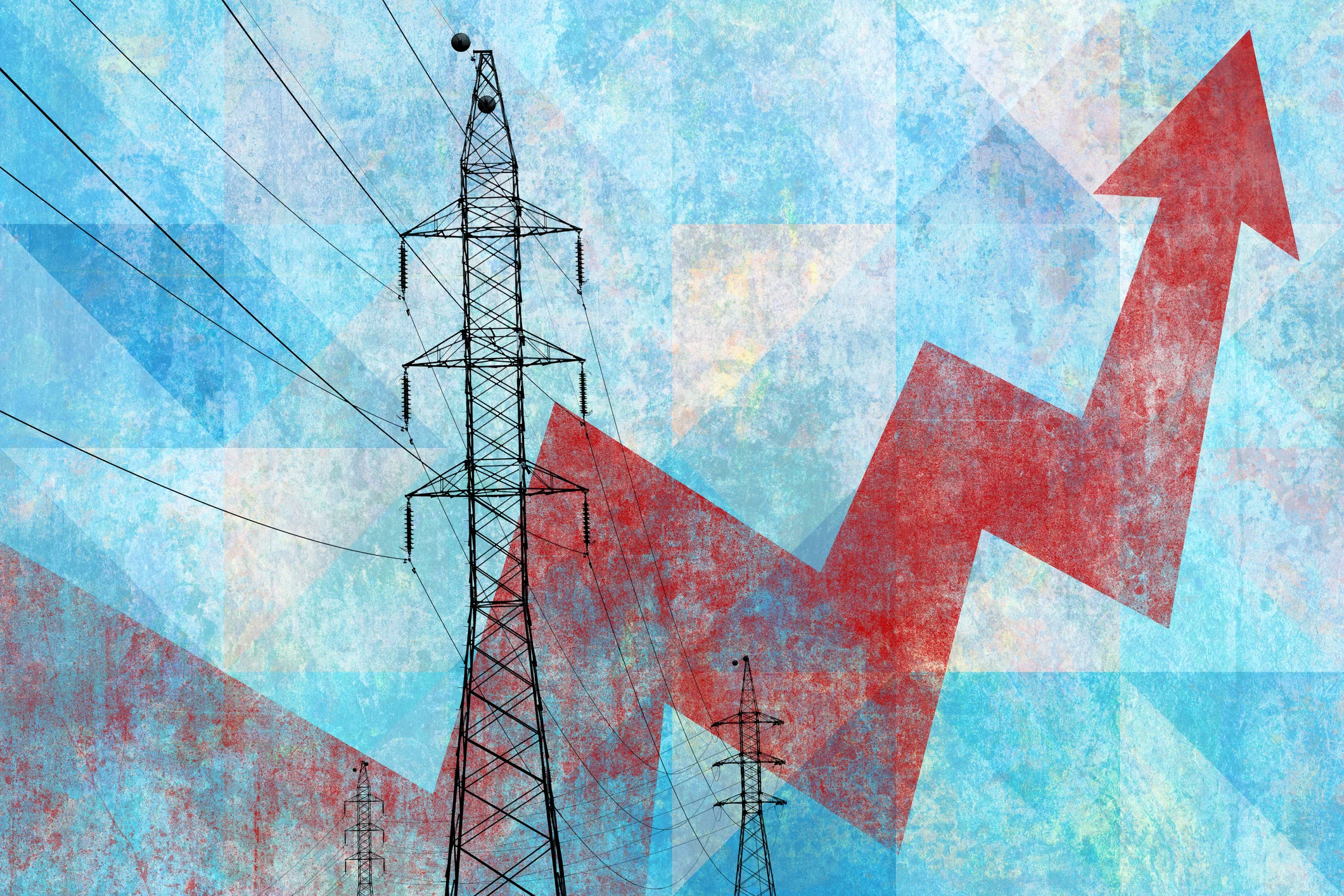Where does utility regulation come from?
This is the second of a two-part series that focused first on the birds (policymakers) and now on the bees (commissioners) that bring utility regulation into the world. Regulation can also come from the courts, but we’re not feeling great about that right now, although there is still hope. We’ve documented 10 steps from bill to law to utility regulation. For this installment, we’ll start at Step 6 (preparing to create regulation) and end at Step 10 (implementing regulation), noting the potential obstacles at each step.
What’s an example of utility regulation? Regulation (which are rules, decisions, or orders) can range from financial rules such as how regulated utilities make money and balance their utility piggy banks, operational requirements like the kind of power plants they can build or run, and environmental constraints ranging from regulations designed to meet decarbonization goals or manage fossil fuel waste.
Rule Making Isn’t Any Easier Than Law Making
Again, let’s acknowledge all of the incredibly hard work that goes into creating laws and regulations, irrespective of if we support or oppose them. Hats off to policymakers, regulators, support staff members, and engaged stakeholders around the globe!
Once they have an enacted law (related to utilities) in hand, utility commissioners (either elected by voters or appointed by a president or governor) are now responsible for translating it into regulation, implementing it, and enforcing it. Knowing what it takes for our hive of regulators (remember, they are the bees in our birds and bees analogy) to make the honey of utility regulation can help us understand, appreciate, influence, and achieve the best outcomes for our communities.
Note: This is primarily from an investor-owned utility regulator perspective in the U.S. and it’s extremely simplified. Governance and processes vary across the country and around the world!
Insights Into the Regulatory Process
Before we get to the steps let’s share our most important insights for you to consider while you read.
- Commissions and their staff write and enforce utility regulations, but the overarching targets or goals are usually set by laws: Rules are typically made to prescribe processes and set scope and objectives related to laws. Laws ideally promote community benefits, and regulations are the instructions on how to get there.
- Clear and holistic regulation is critical: Where there’s a loophole, there’s a way to dodge utility regulation. Using straightforward, specific language that addresses the entire scope of the effort is one best practice to reduce cheating.
- Stakeholders can significantly influence rulemaking and decisions: Regulation can be a more inclusive and accessible process than lawmaking. If you care about the way a law will be implemented, engage with commissions!
5 Steps From Law To Utility Regulation & Implementation
Typically the process to create utility regulation in the U.S. is thorough and structured, which can mean slow and complicated. This can be at the national level, led by the Federal Energy Regulatory Commission (FERC), or at the state level, led by state public utility commissions (sometimes referred to as PUCs, PSCs, and each state has its own acronym to confuse outsiders distinguish their agency).
While the first installment focused on the legislative process, which requires a bill, the catalyst for a commission to make a regulation could come from one of three different sources:
- A law from congress
- An executive order from the governor or president
- The commission’s own motivations (maybe they are trying to fill an unmet need and think they have the authority to do so–one example is a Rhode Island commissioner that proposed performance incentive mechanism principles).
Laws are the most common catalyst, executive orders are less frequent, and commissioners take their own initiative depending upon the state and the topic. Especially when they are appointed by the governor or president, commissioners often follow the directives they receive from their executives, but the Arizona Corporation Commission, for example, has explicit authority to launch a rulemaking of its own volition. (Curious about commissions? Here’s a set of reports from RMI that gets into the details of how they operate. Many of the examples listed in this blog were sourced from these in-depth studies.)
Continuing our birds and bees metaphor, let’s take a simplified look at the regulatory process through the lens of the honey bees.
Step 6
Honey bees find or make a hive (to revisit steps 1-5, again, go here). Regardless of the reason for starting up the regulatory process, in Step 6 commissioners and their staff get prepared. This can involve research, consultations, or convenings (the regulatory term for formal meetings) to gather the input needed to draft a regulation. Sometimes commissions ask for information and comments from stakeholders prior to proposing a draft regulation. Often stakeholders and parties will leverage the successes achieved or lessons learned from similar rulemaking in other jurisdictions.
It takes a large team of dedicated worker bees to prepare the hive–in our analogy, this is the commission planning and drafting utility regulation.
Potential Obstacles
Building the hive is time-consuming. Sometimes laws come to commissioners with very strict timelines that don’t always account for the time that it takes to get the information to write really good utility regulations. To better manage these challenges, utilities can:
- Ask for help. Recruiting more worker bees, although costly, can alleviate some of this burden, but getting stakeholder input and drafting regulations, especially if there’s not something similar to borrow language from, may not be able to be overcome with more staff. RMI’s report The People Element: Positioning PUCs for 21st-Century Success advocates for increased budgets and hiring technical experts to augment commission staff to support the clean energy transition.
- Plan way ahead. Even before something is officially enacted into law, commissions can prepare for what’s to come. Start making lists of stakeholders, and calendar activities, and make adjustments as the law moves through the amendment and approval process. North Carolina’s Clean Energy Regulatory Process is an example of this extensive preparation.
- Explain why more time is needed. With clear plans in place, if there’s a deadline the commission will miss, make sure you have documentation and reasoning to support why it didn’t get where it was supposed to get. Commissions have a lot of responsibilities to juggle, so sometimes we need to trust that they are trying their best to get the work done. (Although maybe commission processes are too slow for the innovative regulatory environment we need.)
Step 7
Worker bees collect nectar. With a hive in place, worker bees can start collecting nectar for the colony. If it hasn’t been done already, commissions open an official docket to organize the information related to this utility regulation. Proposed and drafted versions of the utility regulation live in this filing system, along with research and analysis from experts and comments from stakeholders. If there is an associated proceeding with the utility regulation, it’s likely that there will be a large volume of expert witnesses, stakeholder comments, and testimony to include in the public record.
Potential Obstacles
Nectar isn’t accessible. The biggest challenge with this step is accessibility. Those that know how to navigate regulatory proceedings are familiar with the formality and structured process, but to outsiders, this likely seems like a jumble of documents and contradicting perspectives. For the public, regulators may consider:
- Use clear language: Commissioners can help folks from outside the regulatory world understand new regulations better by writing with more clarity. This helps reduce the number of loopholes that exist when vague language is used in regulation that could be interpreted differently by utilities than what commissions intended.
- Make materials easy to find: Electronic filing systems may be only slightly better than a physical file folder of paper. They sometimes require users to register to obtain them and then documents are listed with internal naming conventions that take a decoder ring to translate. Whatever commissions can do to advocate for externally accessible websites with clearly organized dockets is much appreciated by non-experts trying to follow along. This increases the ability for new voices and new perspectives to be shared. For instance, the Washington Utilities and Transportation Commission has an excellent example of an accessible website for the Clean Energy Transformation Act.
- Create simple feedback tools: While there are requirements for fully participating in a proceeding (California, for example), commissions can set up easy-to-use feedback tools to solicit stakeholder feedback. A leader in this regard, Hawaii has a great website to submit public comments that doesn’t require a docket number for submission. This helps break down the barriers and offers new voices a forum to share input.
Step 8
Reminder, we’re still focusing on making honey in the U.S. Since each regulatory agency is a little different, this is not a standardized process and varies based on jurisdiction and local need. The concepts, ideas, and suggestions in this article may not be relevant everywhere.
Turn nectar into honey. The worker bees hand over the honey-making responsibilities to the house bees, who turn the nectar into honey. This involves transferring nectar down a line of bees that ingest it and add enzymes to it and change the chemical makeup of nectar. In our analogy, we could think of commission staff as serving a lot of the preparation work that the worker bees do and the commissioners, or whoever is the official regulation author, are filling the role of house bees.
At this step, commissions are modifying proposed utility regulations based on the input they’ve received from the proceeding and comments. They want to make the best utility regulation possible (the sweetest, most delicious honey) for the most people, but “best” looks different across stakeholder perspectives. Commissions try to account for all of the information, ideas, and intel shared in the docket and through a proceeding, but it’s not an easy task. Perspectives are diverse and changing every day, and equity is an increasingly important element of any regulation.
House bees have to prepare the nectar by flapping their wings and this makes honey. We can think of this step as a bunch of commissioners and staff working hard to turn a draft regulation into the final rule.
Potential Obstacles
The honey isn’t delicious. Coordination, patience, and perseverance are important at this stage to make the tastiest honey.
- Coordinate opposing perspectives: Commissions can be transparent and honest to build trust with stakeholders, which helps parties understand any regulatory compromises made. Unfortunately, some regions have a history of untrustworthy commissions to overcome.
- Have patience and perseverance: Helping stakeholders feel heard is best practice and requires time and space. At the end of the drafting process, commissions may have to make tough decisions and stand their ground. It is their responsibility to turn that law into a regulation.
Step 9
Eat or preserve the honey. Now that the bees have honey, they either eat it or store it for later—kind of like utility regulation, which can either require immediate action or may take time for planning before an acting period. Final utility regulation is set when commissioners (depending on the state, there are between three and seven commissioners that serve on a public utility commission) approve or vote on the ruling. If the regulation isn’t approved, commissions will go back to the drawing board to modify the regulation.
Potential Obstacles
The colony needs more honey. Something happened in the honey-making process and the colony of bees is hungry for more. If utilities are required to act before they plan, utilities may not have the information needed to make optimal decisions—it could be very reactive. If utilities are given time to plan before acting, they may come up with reasons that the plans cannot comply with regulations. Both of these challenges can be mitigated by balancing the prescriptiveness of regulation with the expected timeline of action.
- Include clear directives: The only thing worse than no regulation is vague regulation that puts the responsibility on utilities to translate commission-speak into utility action. This usually has a negative impact on communities—either the commission has to spend time and energy coaching a utility to correctly comply or rejects a utility’s course of action when it doesn’t meet the spirit of the regulation.
- Make time for consultation: Even if the utility regulation is adequately prescriptive, there is value in commissions meeting openly with utilities about their actions and plans. Having a group conversation with representatives from each regulated utility can be valuable, too. Creating space for questions and feedback before implementation can ensure that the bees are well-fed.
Step 10
Thrive. Hives that thrive are good for everyone! The flowers (active stakeholders), the bees (commissions), and anyone that likes honey (customers, communities, and the planet). It’s not an easy honey-making process and implementing regulation can be sticky.
At this step, commissions empower the utilities to implement the new regulation. To determine if utilities are complying, regulation may require utilities to submit plans, current statuses, and final reports (which are sometimes evaluated by third parties) to demonstrate that they are meeting or exceeding regulatory requirements. When they fail, utilities may be penalized. Or the regulation may need to be reconsidered or updated to make it attainable.
Potential Obstacles
Maintaining balance. Commissioners and staff change, utility personnel transition, and policy evolves. Regulation must be clear to achieve the goals of today while being nimble to adapt to what’s next. It’s a balancing act to have commission and utility leaders that acknowledge the progress of the past and set up the utility regulation process for success in the future.
Sometimes utilities fail to meet regulations, and that might be ok if they tried and something legitimate took them off course.
Monitoring and enforcing the regulation continues until the regulation expires (the utility reached a certain target or the regulation had a termination date) or a new rule is passed that overrides the existing regulation.
Summary of Best Practices to Avoid Obstacles
What are the biggest challenges and strategies to overcome the potential obstacles in the law-to-rule-making process? (Secret insight: these are extremely similar to the challenges in the bill-to-law-making process.)
- Time: It’s a long process.
- Try to get the contents of the utility regulation right the first time. How? With resources, balance, and stakeholder engagement (see below).
- Resources: It takes a lot of money, staff hours, patience, and intelligence to create a regulation and approve it.
- Use external parties for support as an extension of staff, either contracted or informally, to create stronger regulation. For example, Connecticut’s Public Utilities Regulatory Authority hired Strategen to be the program administrator of their Innovative Energy Solutions Program.
- Balance: If this rule doesn’t seem fair to major stakeholders (customers, industries, utilities), it’s going to be incredibly difficult to move through all of the obstacles.
- The most easily passed and implemented rules are accepted by utilities, industries, and customers. Aspire to balance it for everyone’s best interest, a win-win-win. Performance-based regulation can help align utility operational and financial incentives with customer and industry needs.
- Stakeholder engagement: Stakeholders of utility regulation can include local ratepayers and communities, utilities, state agencies, and shareholders. These could be environmental non-profits, consumer advocates, commercial and industrial customer groups, or oil and gas representatives.
- Spend time on stakeholder engagement and addressing upfront concerns through interactive meetings before drafting regulations. Provide (or require utilities to provide) data and evidence to guide and inform the rulemaking. Investing time at this stage will make it easier to implement and enforce regulations.
Utility Regulation: Law to Regulation Conclusion
This is the typical journey taken for creating utility regulation–turning a law or order into a regulation that changes how utilities do something.
As noted in the previous article, through rulemaking and proceedings, regulators can set the tone of utility priorities. Commissions can emphasize system reliability or equitable distribution of clean energy benefits or reducing customer costs or harnessing the value of distributed energy resources (DERs), as examples. Regulators can go a level deeper in their rulemaking to set photovoltaic solar compensation tariffs, direct electric vehicle public charging infrastructure, or require demand response programs. Utilities can plan for these rules by using tools to forecast system loads and to manage both their DER or demand response programs using the right distributed energy resource management systems (DERMS).
Want to know about the bill-to-law-making process? Read our previous article on that topic.





